On June 1, 1874, a former member of the Royal Gloster [1] Lodge No. 130 in Southampton, with his wife and young daughter, sailed into Wellington, New Zealand, from Liverpool, via Melbourne.

Emblem of Royal Gloucester (Gloster) Lodge 130. Via https://www.facebook.com/royalgloucester130/
At the time the arrival of emigrants from England was a routine event, and usually there would have been few people, if any, waiting on the wharf for them.
But this arrival was attended, and the family enthusiastically greeted by all the masters and boys of the then Wellington College and Grammar School, now Wellington College, one of New Zealand’s oldest and most prestigious secondary schools.
The Freemason they were there to meet was Bro Kenneth Wilson, their new Headmaster.
Frank Leckie, who was a student during Wilson’s tenure, described the arrival as a “hearty welcome”.

Image: Kenneth Wilson, c. 1891
IMAGE redit: Palmerston North City Library. Public Domain licence
Kenneth Wilson MA (Cantab), aged 32, was a man who played a significant role in the development of secondary education in Wellington, and also became deeply involved in Freemasonry and a variety of other interests and activities until his death at the age of 78 in 1920.
His main activity outside education for many years was Freemasonry, and his biography shows that his commitment to the principles and tenets of the Craft was a driving force in his life and work – in today’s parlance, he “walked the talk” (although heaven knows what he, a Classics scholar, would have made of that expression).
He is a Mason of whom we can be proud, who made an outstanding contribution to both education and Freemasonry in the early days of the colony.
It can fairly be said that he modelled the Wellington College motto Lumen accipe et imperti (Receive the light and pass it on).

Coat of arms of Wellington College, New Zealand. By Stanley Bannerman – Own work,
IMAGE LINKED: wikimedia Attribution 4.0 International (CC BY 4.0)
Wilson came to Wellington College well-recommended. The Board of Governors had asked Dr Vaughan Temple, formerly Headmaster of the famous Rugby School, to find a new Headmaster.
His choice was Wilson, the second master of King Edward VI School in Southampton. (This school has been in business since 1553, for 321 years when Wilson left, to join a colonial school just seven years old! It’s yet another example of the massive leap of faith so many early settlers made.)
His family background gives some early pointers to the nature of the man: he was a Yorkshireman, and according to Wikipedia, his father was a colliery proprietor, “an educated and cultured man who was the long-time secretary of the Leeds Philosophical and Literary Society”.
His brother Edmund was a prominent lawyer and “energetic supporter of education development”; and his sister Lucy was a busy and well-known suffragist and activist for women’s rights and dedicated to the expansion of educational opportunities for women at a time when they could not undertake formal education beyond secondary school.
So, the man who stepped off the ship in Wellington was one of a family passionate about education and intellectual betterment – a family of strong principles not to be easily betrayed or discarded in the face of adversity. It’s no wonder he was a Freemason.
Despite facing significant challenges through his seven years as Headmaster, Wilson made a lasting impact not only at Wellington College but also on education in New Zealand generally.
Leckie remembers him as a “dignified gentleman of undeniable teaching ability” and recalled that Wilson instituted the practice of masters taking lunch with the boys – perhaps, for the latter, a foretaste of the fellowship of a Masonic refectory.
During the meal Wilson would lead discussion and debate on current events.
Wilson worked to not only instil integrity and honour but also led with the same ideals – ideals that reflect the tenets of the Craft. As Headmaster he was in the habit of placing boys “on their honour”, meaning trusting their word as gentlemen.
He had no tolerance for a student demonstrating “ungentlemanly” conduct.

Kenneth Wilson (headmaster) is pictured along with other Masters at Wellington College in 1875. Fig. 245 from “Early Wellington”, Louis E. Ward, 1928
IMAGE Courtesy: The New Zealand Provincial Histories Collection Creative Commons Attribution-Share Alike 3.0 New Zealand Licence
Within months of taking up his post, Wilson applied to Cambridge University to allow the Cambridge secondary examination system to be used at Wellington College and other key colonial schools.
This seems to have been the first international standard of examinations for secondary education implemented in New Zealand, and Wilson’s innovation is of such significance that it is still in use.
Severe social and political forces that shaped the colony through the second half of the 1870s made Wilson’s tenure at Wellington College deeply challenging.
Student enrolment was inhibited by an economic recession and an outbreak of scarlet fever, which deeply affected Wilson personally: his youngest daughter, six-month-old Isabel, was a victim of the disease. This was the first of several family tragedies Wilson was to experience in New Zealand.
In 1879, the Department of Education asked Wilson to begin providing classes for girls. He readily agreed, noting he and his staff would be “willing to give all the help in their power to start it”.
These classes laid the foundation for what would eventually become Wellington Girls’ College, and his enthusiasm echoed the passion his sister Lucy brought to the development of women’s education in England.
Wilson was again struck by tragedy at the end of 1879 with the untimely passing of his wife Fanny. She was loved by the student population for her “charming disposition and beauty”. Fanny had given birth to their son, Kenneth, just three weeks earlier.
As the new decade began, the College was continuing to struggle financially despite Wilson’s and his staff’s best efforts.
Finally, after two rounds of restructuring, in the first of which Wilson accepted a significant salary cut, he resigned to open his own school in 1881.
Augustus Heine, a long-time staff member, summarized the blow that was felt with the departure of Wilson as Headmaster, writing that his name had been “so completely identified with the success of the institution that it was almost impossible to imagine its existence under other guidance”.
Wilson’s impact was “written indelibly on its (the College’s) records – a memento of … long and faithful work in the service of secondary education”.
As busy as Wilson must have been at the College and with his subsequent educational activities in the 1880s, he was also an enthusiastic and busy Freemason.
He had arrived in Wellington at a significant time for English Constitution Freemasonry. Barely two years later, the District Grand Lodge of North Island New Zealand was established, taking charge of 11 Lodges which were not previously subject to any local or Australian control.
In that context Wilson’s own Masonic history demonstrates the level of trust and respect he was accorded by his brethren, culminating in holding the presidency of the most important local governance body, as well as discharging important ceremonial duties.

New Zealand Mail, Issue 899, 24 May 1889, Page 7.
IMAGE Courtesy: National Library of New Zealand, no known copyright restrictions
He joined New Zealand Pacific Lodge No 517 (now No 2 of the New Zealand Constitution) in October 1874.
In December that year, this Lodge sponsored Wellington Lodge No 1521, which Wilson joined in May 1875.
He later also joined Aorangi Lodge No 2300 and United Manawatu Lodge No 1721; all three Lodges are still working under the English Constitution.
He became Master of Lodge Wellington 1880-1881, and over the next few years he served at times as the Lodge’s auditor and as a trustee of the hall company, tasks which no doubt contributed to his being made an honorary member shortly before moving to Palmerston North, about 140 kilometres north of Wellington, in 1891.

New Zealand Mail, Issue 899, 24 May 1889, Page 7.
IMAGE Courtesy: National Library of New Zealand, no known copyright restrictions
Once through the chair in Wellington, apart from tasks he accepted in that Lodge, he quickly became a trusted officer in the fledgling District. He served in several ceremonial roles, rising to District Grand Senior Warden in 1884, and was promoted to the cornerstone governance role of President of the Board of General Purposes in 1888.
His most active years in Freemasonry seem to have been those immediately after his time as Headmaster of Wellington College, when he made a living mainly through a variety of educational activities.
This is understandable, as it was in 1881 that he both resigned as Headmaster and completed his term as Master of Lodge Wellington.
He remained deeply involved in the growth of secondary education in Wellington and beyond – at his own school, the Thorndon Classical School; teaching at the fledgling Wellington Girls’ College (then Wellington Girls’ High School) and the YMCA; and setting and conducting examinations for various bodies, before relocating to Palmerston North, where he founded another high school.
During this period, he also served on the Harbour Board and the Lambton Licensing Committee, both paid roles.
Apparently, he held no grudge against the Wellington College Board for actions which must have caused him considerable stress and anxiety, not only as a man of high ideals but also as a man with a family to provide for: before moving to Palmerston North, he returned to the College in 1886, as Classics Master, until forced out by Board retrenchment moves in 1891.
Again, he had earned the esteem of his pupils and colleagues, the Evening Post reported – he was presented with a letter signed by over 40 of them and a “purse of sovereigns”. “It is very pleasing to find such a healthy sentiment existing towards one who was always deservedly popular amongst the boys who were under his tuition”, the paper said.

Wellington College in the 1890s.
IMAGE Courtesy: ellington City Council Archives, no known copyright restrictions.
Unfortunately, the Wilson story becomes somewhat blurred after his relocation to Palmerston North.
The secondary school he founded there, the Palmerston North High School, opened in February 1892, promising “a good liberal modern education”, according to its advertisements in the Manawatu Times, but little more information is available.
Masonically, although he joined United Manawatu No 1721 in Palmerston North, there is no record of him holding office in that Lodge or any further District office, and it seems likely that in his new home, he turned his attention to other interests.
He had been active in the Anglican Church, and also a keen bowler and bowling administrator in Wellington and pursued both interests in Palmerston North.
His appetite for founding organisations continued outside schools – he founded the Manawatu Philosophical Society (reflecting his father’s long involvement with the Leeds Philosophical and Literary Society) and was an enthusiastic member thereof until his death in 1920, including serving as secretary and treasurer for many years. He was honoured with life membership in 1911.
It’s possible that Wilson was becoming a little eccentric by this stage of his life – in 1908 he travelled to England as a diocesan delegate to an Anglican Church Congress, and on his return, the Manawatu Times reported that he had brought back for the Society “a collection of English plants, mounted; a collection of English moths and butterflies from a grand-nephew … and 36 volumes of the Natural History Guide from the British Museum”. It is unclear how these items would assist the ruminations of a philosophical society.
Wilson had remarried in 1883, to Amy Clark, who bore him two sons and a daughter, but sadly she died in 1890, and Wilson was a widower for the rest of his life.
Altogether he had five children who lived to adulthood: half-sisters Ethel and May, and three sons, one to Fanny (Kenneth) and two to Amy (Hugh and Guy).
In a further blow to the family, Guy was killed in World War 1, leaving a wife and a very young child.
The well-established Wilson family passion for education apparently also ran to the next generation.
About 1912, Wilson’s daughter Ethel, the little girl who arrived in Wellington with her parents in 1874, supported by her sister May “Dolly” Wilson, took over Carncot School in Palmerston North as both owner and Headmistress from its founder, and then in 1926 became Headmistress of St Mary’s Diocesan School for Girls in Stratford, Taranaki – now called Taranaki Dio. She was later joined there by May as Matron. Both schools are thriving today.

Carnot Independent School for Girls pictured in recent years.
IMAGE LINKED: wikimedia Attribution 4.0 International (CC BY 4.0)
Taranaki Dio’s 90th jubilee history reports that when it was in financial difficulties in the 1930s, because of the Great Depression, Ethel offered to take a salary cut. As far as we know the one her father accepted decades before wasn’t his idea, but he took it.
It seems father and daughter both set service (and perhaps common sense, in terms of keeping an income!) above pride.
And at Ethel’s memorial service at Taranaki Dio in 1968, the school chaplain said that she “guided this school through some of the hardest periods in its history” – another echo of Kenneth.
For Wellingtonians, Kenneth Wilson holds an important place in the history of Wellington College, the area’s premier secondary school, and the establishment of its sister establishment, Wellington Girls’ College.
His efforts were crucial in the successful struggle to build the permanent foundations of a school which has always been a leader in the New Zealand school system.
Masonically, his obvious commitment to the success of the Lodges and the District in English Constitution Freemasonry played a key role in building the foundation on which they thrive today, in harmony with the Grand Lodge of New Zealand.
Kenneth Wilson wasn’t born a Kiwi, but he certainly had a big hand in what that means today for Wellington College and local Freemasons.
Footnotes
Bibliography
Beasley, A W: The Light Accepted – 125 Years of Wellington College (1992)
Currie, A E: Masonic Annals of Wellington (1961)
Heine, Augustus: Old Boys’ Record (1891)
Leckie, Frank: Early History of Wellington College, N.Z (1934)
Robertshawe, R F: A History of St Mary’s – Diocesan School for Girls Stratford (90th Jubilee – 2004)
References
[1] That’s how the Lodge spelt Gloucester then. It now uses the customary spelling.
Links
https://en.wikipedia.org/wiki/Lucy_Wilson_(suffragist)
https://paperspast.natlib.govt.nz/newspapers
https://teara.govt.nz/en/economic-history/page-5)
https://www.geni.com/people/Kenneth-Wilson
Newspapers
The Evening Post
The Manawatu Standard
The Manawatu Times
The New Zealand Times
About The Authors
W Bro Geoff Davies PGD is the Past Master of Research Lodge of Wellington No 194, Grand Lodge of New Zealand.
Rhys Davies (Wellington College Class of 2007)
Recent Articles: in people series
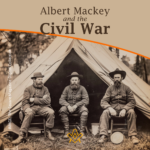 Albert Mackey and the Civil War In the midst of the Civil War's darkness, Dr. Albert G. Mackey, a devoted Freemason, shone a light of brotherhood and peace. Despite the nation's divide, Mackey tirelessly advocated for unity and compassion, embodying Freemasonry's highest ideals—fraternal love and mutual aid. His actions remind us that even in dire times, humanity's best qualities can prevail. |
 Discover the enduring bond of brotherhood at Lodge Dumfries Kilwinning No. 53, Scotland's oldest Masonic lodge with rich historical roots and cultural ties to poet Robert Burns. Experience rituals steeped in tradition, fostering unity and shared values, proving Freemasonry's timeless relevance in bridging cultural and global divides. Embrace the spirit of universal fraternity. |
 Discover the profound connections between John Ruskin's architectural philosophies and Freemasonry's symbolic principles. Delve into a world where craftsmanship, morality, and beauty intertwine, revealing timeless values that transcend individual ideas. Explore how these parallels enrich our understanding of cultural history, urging us to appreciate the deep impacts of architectural symbolism on society’s moral fabric. |
 Discover the incredible tale of the Taxil Hoax: a stunning testament to human gullibility. Unmasked by its mastermind, Leo Taxil, this elaborate scheme shook the world by fusing Freemasonry with diabolical plots, all crafted from lies. Dive into a story of deception that highlights our capacity for belief and the astonishing extents of our credulity. A reminder – question everything. |
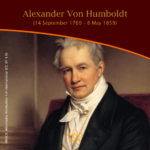 Dive into the extraordinary legacy of Alexander Von Humboldt, an intrepid explorer who defied boundaries to quench his insatiable thirst for knowledge. Embarking on a perilous five-year journey, Humboldt unveiled the Earth’s secrets, laying the foundation for modern conservationism. Discover his timeless impact on science and the spirit of exploration. |
 Voltaire - Freethinker and Freemason Discover the intriguing connection between the Enlightenment genius, Voltaire, and his association with Freemasonry in his final days. Unveil how his initiation into this secretive organization aligned with his lifelong pursuit of knowledge, civil liberties, and societal progress. Explore a captivating facet of Voltaire's remarkable legacy. |
 Robert Burns; But not as we know him A controversial subject but one that needs addressing. Robert Burns has not only been tarred with the presentism brush of being associated with slavery, but more scaldingly accused of being a rapist - a 'Weinstein sex pest' of his age. |
 Richard Parsons, 1st Earl of Rosse Discover the captivating story of Richard Parsons, 1st Earl of Rosse, the First Grand Master of Grand Lodge of Ireland, as we explore his rise to nobility, scandalous affiliations, and lasting legacy in 18th-century Irish history. Uncover the hidden secrets of this influential figure and delve into his intriguing associations and personal life. |
 James Gibbs St. Mary-Le-Strand Church Ricky Pound examines the mysterious carvings etched into the wall at St Mary-Le-Strand Church in the heart of London - are they just stonemasons' marks or a Freemason’s legacy? |
 Freemasonry and the Royal Family In the annals of British history, Freemasonry occupies a distinctive place. This centuries-old society, cloaked in symbolism and known for its masonic rituals, has intertwined with the British Royal Family in fascinating ways. The relationship between Freemasonry and the Royal Family is as complex as it is enduring, a melding of tradition, power, and mystery that continues to captivate the public imagination. |
 A Man Of High Ideals: Kenneth Wilson MA A biography of Kenneth Wilson, his life at Wellington College, and freemasonry in New Zealand by W. Bro Geoff Davies PGD and Rhys Davies |
 In 1786, intending to emigrate to Jamaica, Robert Burns wrote one of his finest poetical pieces – a poignant Farewell to Freemasonry that he wrote for his Brethren of St. James's Lodge, Tarbolton. |
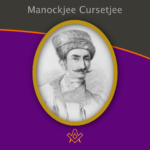 Alex Lishanin explores Mumbai and discovers the story of Lodge Rising Star of Western India and Manockjee Cursetjee – the first Indian to enter the Masonic Brotherhood of India. |
 Aleister Crowley - a very irregular Freemason Aleister Crowley, although made a Freemason in France, held a desire to be recognised as a 'regular' Freemason within the jurisdiction of UGLE – a goal that was never achieved. |
 Sir Joseph Banks – The botanical Freemason Banks was also the first Freemason to set foot in Australia, who was at the time, on a combined Royal Navy & Royal Society scientific expedition to the South Pacific Ocean on HMS Endeavour led by Captain James Cook. |
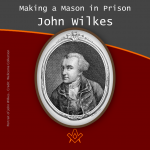 Making a Mason in Prison: the John Wilkes’ exception? |
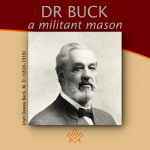 "To be a good man and true" is the first great lesson a man should learn, and over 40 years of being just that in example, Dr Buck won the right to lay down the precept. |
 Elias Ashmole: Masonic Hero or Scheming Chancer? The debate is on! Two eminent Masonic scholars go head to head: Yasha Beresiner proposes that Elias Ashmole was 'a Masonic hero', whereas Robert Lomas posits that Ashmole was a 'scheming chancer'. |
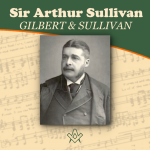 Sir Arthur Sullivan - A Masonic Composer We are all familiar with the comic operas of Gilbert and Sullivan, but did you know Sullivan was a Freemason, lets find out more…. |
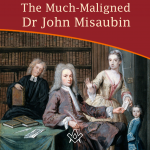 The Much-Maligned Dr John Misaubin The reputation of the Huguenot Freemason, has been buffeted by waves of criticism for the best part of three hundred years. |
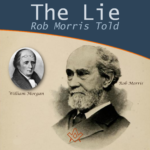 Was William Morgan really murdered by Masons in 1826? And what was the lie Masonic author Rob Morris told? Find out more in the intriguing story of 'The Morgan Affair'. |
 Lived Respected - Died Regretted Lived Respected - Died Regretted: a tribute to HRH The Prince Philip, Duke of Edinburgh |
 Who was Moses Jacob Ezekiel, a Freemason, American Civil War Soldier, renowned sculptor ? |
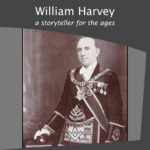 A Masonic author and Provincial Grand Master of Forfarshire in Scotland |
 Who was Philip, Duke of Wharton and was he Freemasonry’s Loose Cannon Ball ? |
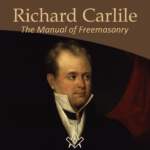 Richard Carlile - The Manual of Freemasonry Will the real author behind The Manual of Freemasonry please stand up! |
 Nicholas Hawksmoor – the ‘Devil’s Architect’ Nicholas Hawksmoor was one of the 18th century’s most prolific architects |
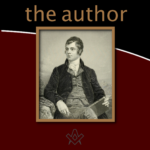 By Bro. Anthony Oneal Haye (1838-1877), Past Poet Laureate, Lodge Canongate Kilwinning No. 2, Edinburgh. |
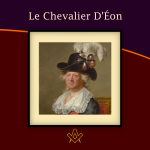 The Curious Case of the Chevalier d’Éon A cross-dressing author, diplomat, soldier and spy, the Le Chevalier D'Éon, a man who passed as a woman, became a legend in his own lifetime. |
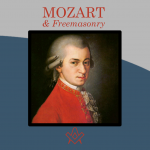 Mozart Freemasonry and The Magic Flute. Rev'd Dr Peter Mullen provides a historical view on the interesting topics |
masonic knowledge
to be a better citizen of the world
share the square with two brothers

click image to open email app on mobile device







